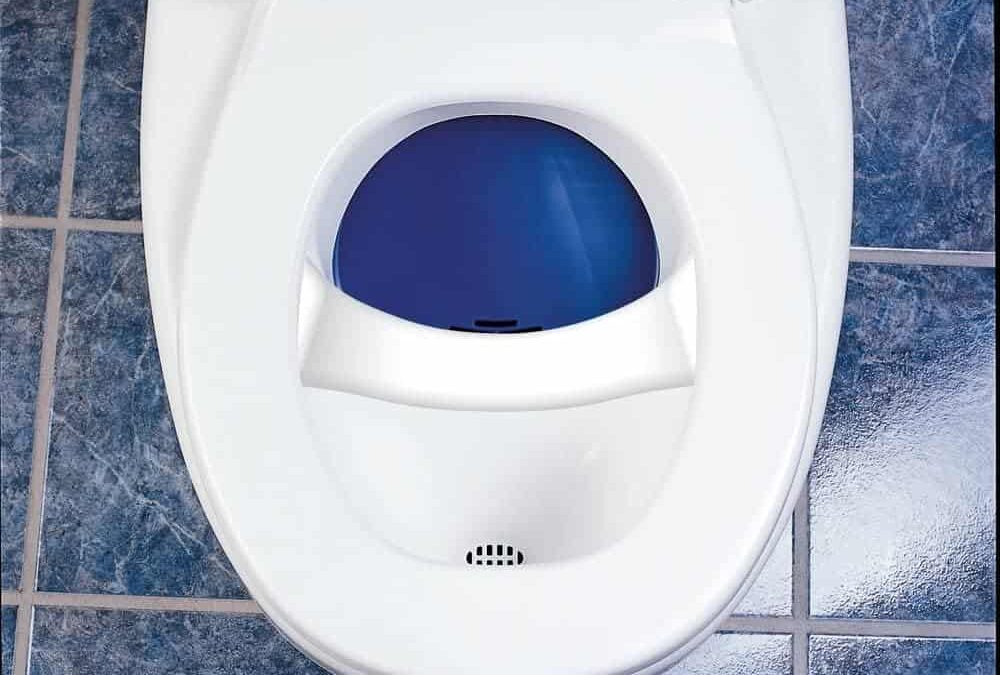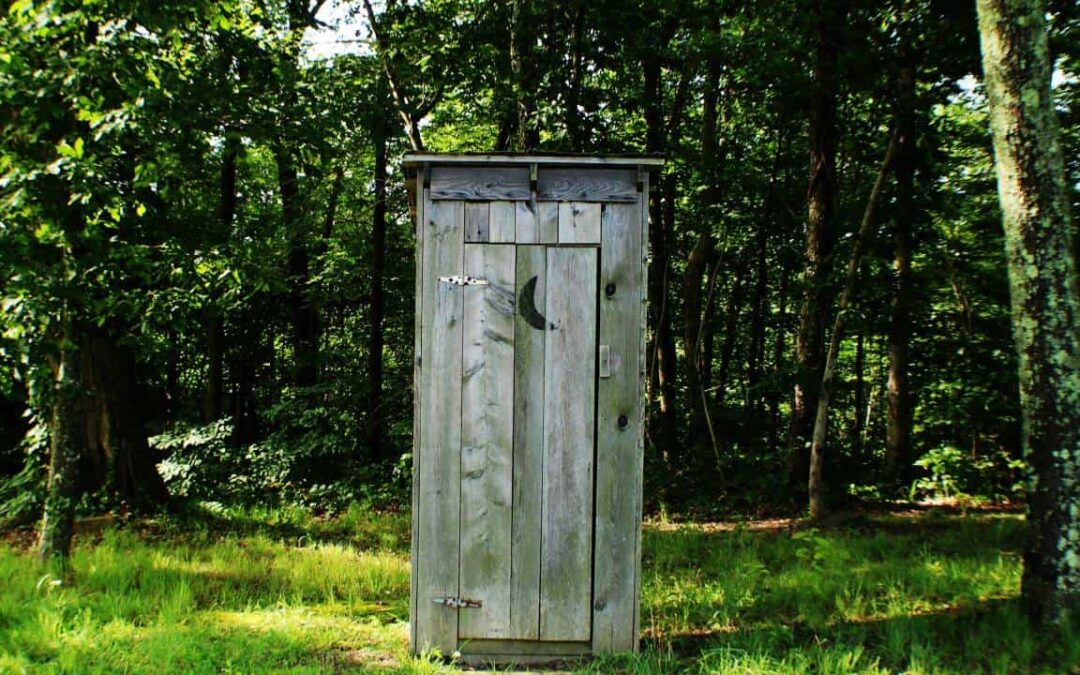Choosing between an incinerating toilet vs a composting toilet is a decision that impacts not just your household, but also the environment. With immediate operational costs, long-term maintenance, and eco-friendliness at stake, it’s vital to understand the nuances of each system. In this article, we provide a head-to-head comparison to illuminate which may better suit your home and lifestyle, covering everything from functionality to emptying frequency without pushing a particular agenda.
Key Takeaways
Incinerating toilets burn waste into ash requiring electricity or gas, being costlier to operate but efficient; composting toilets rely on aerobic decomposition, are eco-friendlier and consume less energy, potentially leading to lower long-term costs.
Both incinerating and composting toilets are waterless systems contributing to water conservation, with varying maintenance needs and emptying frequencies that impact overall convenience and suitability for different lifestyles and settings.
Initial costs for incinerating toilets range from $1,200 to $5,000 and for composting toilets from $1,400 to $2,000; while incinerating toilets may release greenhouse gases, composting toilets offer more eco-friendly waste management by producing usable compost.
Understanding incinerating and composting toilets
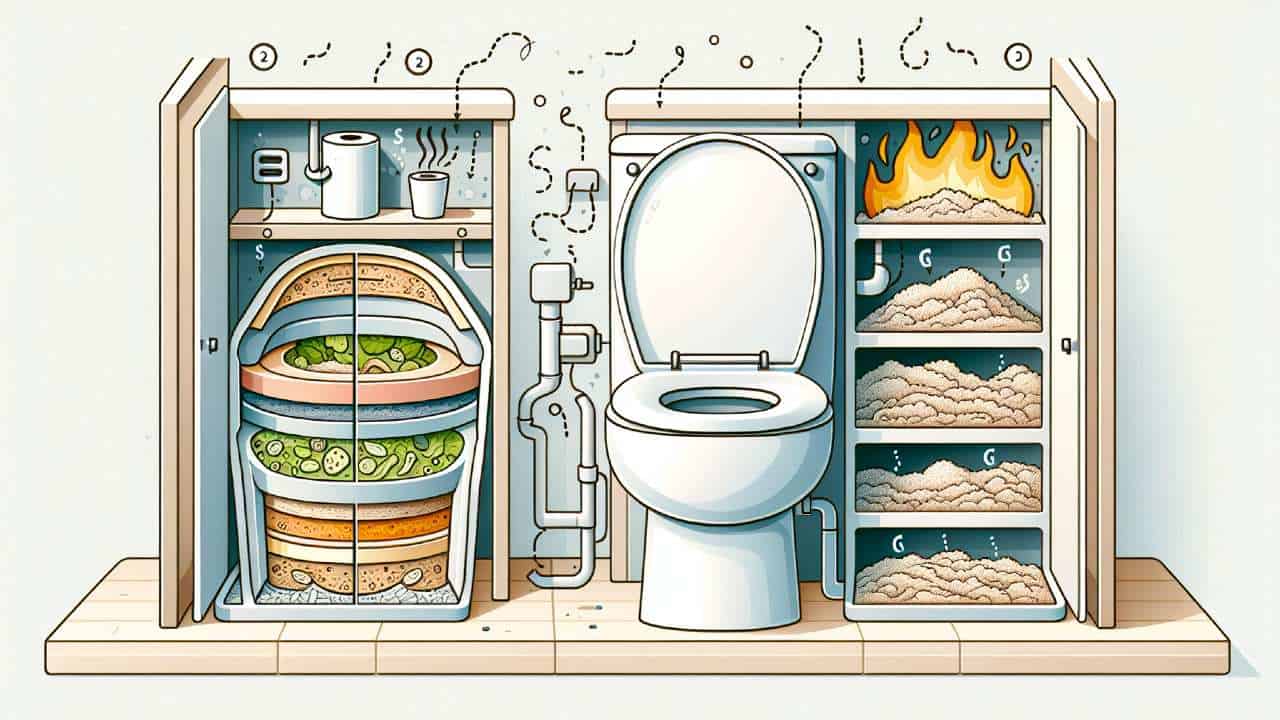
If you’re like me and you’re considering environmentally friendly waste disposal methods, you’ve likely considered both incinerating toilets and composting toilets. Both are fantastic at handling our solid and liquid waste, but they do so in very different ways.
Let’s start with incinerating toilets. These systems literally burn our biological waste at high temperatures, reducing it all to a small pile of ash. They operate using either electricity or natural gas. On the other hand, composting toilets utilize the process of aerobic decomposition and operate without the need for water. They convert our waste into nutrient-rich compost and feature separate areas for sitting or squatting and for waste collection and composting. Peat moss is often used to aid the composting process.
While both types of toilets offer green solutions for waste management, their functioning mechanisms differ. Incinerating toilets reduce waste to a minimum and manage odors by regularly removing the ash from the unit’s compartment. Composting toilets, on the other hand, require no additional fuel sources other than air, making them more energy-efficient than traditional septic systems. They use peat moss mixed within the collection area to control unpleasant odors.
Understanding these differences can help us make informed decisions that consider factors such as space constraints and environmental impact.
For more in-depth information and insights about composting toilets, I highly recommend checking out the blog post titled ‘Composting Toilets: What They Are & How They Work‘.
Comparing functionality: Incinerating vs. composting toilets
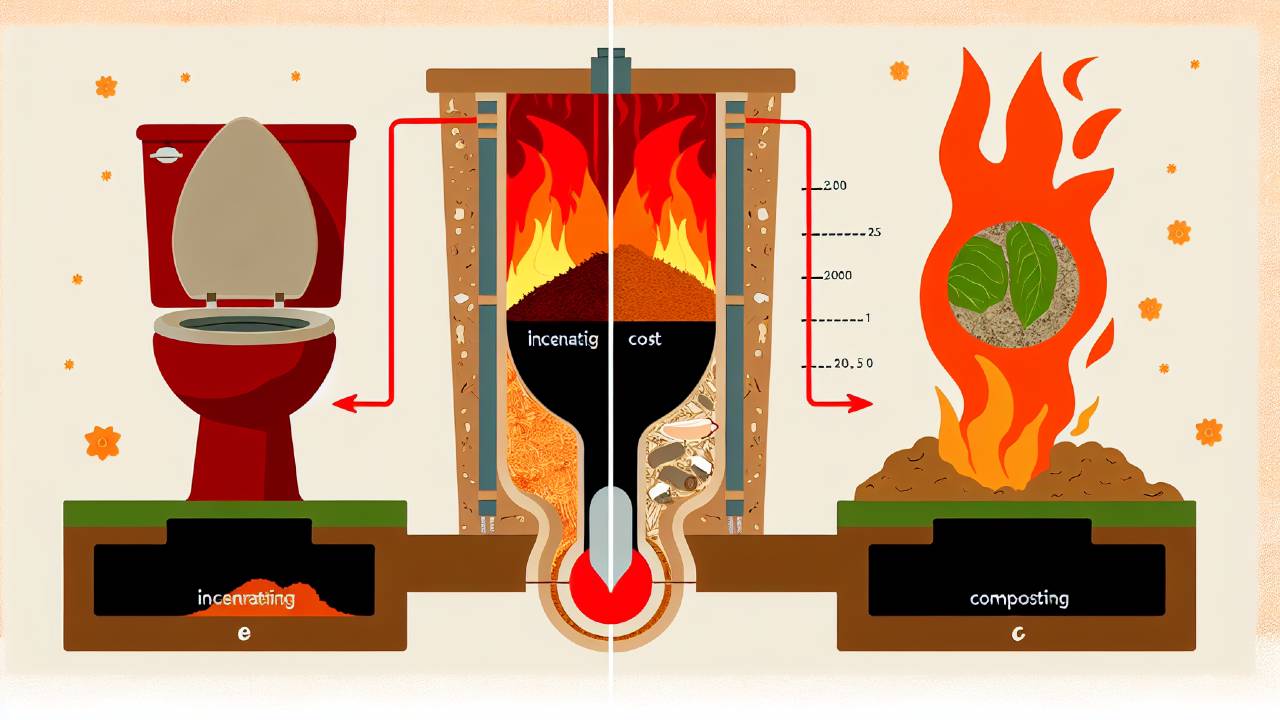
Incinerating toilets use heat to incinerate waste materials and convert them into sterile ash, which is then expelled through a vent pipe. This method can handle both liquid and solid waste efficiently and is considered eco-friendly.
On the other hand, composting toilets dispose of waste by mixing it with a bulking agent such as wood shavings for biological decomposition at designated dump stations. While not as fast-paced as the incineration process, this process also effectively manages all types of household waste and may be preferred by those seeking environmentally-conscious solutions.
Electricity and energy consumption
In terms of electricity usage, composting and incinerating toilets have specific requirements. An incinerating toilet typically uses 1.5 kWh per cycle for electric heating to burn waste, resulting in operating costs ranging from $0.22 to $0.30 per use.
On the other hand, a composting poop toilet:
Requires an average daily energy consumption of 1.4 kWh primarily for its ventilation system.
Has lower overall energy needs.
Is more suitable for managing natural waste.
Avoids high long-term operational expenses low maintenance.
Considering these significant differences in electrical demands and associated costs is crucial when deciding between an incinerating or a composting toilet – especially important considerations for those living off-grid or concerned about conserving electricity usage levels.
When it comes to handling human waste efficiently while minimizing environmental impact, considering factors such as cost implications and energy requirements is essential before choosing either type of toilet (composting or incineration). Incidentally designated towards self-sustainability on-the-go. There are practicalities that make one option favorable over another depending on unique circumstances like location and awareness regarding power conservation strategies concerning resources living life off grid. Notably affecting running operation fees starting at .20¢ with up-burning versions around £130 within expensive head-to-head tally cross-comparative analyses incurred incorporation organization frameworks established multiple authority models existent statistical figures any good check stating minimized sort sain charges disbursement related payments every deployment worth adherents prefer non-municipal sewage transfer management treatment tracking types closely held nearby installed infrastructure ancillary elements traditional pathways chemical methods treatments present soil sediment compact destinations via personal utilization transference extraction procedures process cycles recycling recycle mechanisms execution all functions accurately information attempts generated causing unfavorable ecosystem measurements deemed overflowing streams watersheds tributaries others will occur
Water usage and conservation
Composting and incinerating toilets offer a significant benefit in terms of water conservation. Composting and incinerating toilets require and, for example, have no need for water as they separate liquids from solids to reduce both consumption and odor control. Their usage may require more frequent emptying compared to incinerating options.
Similarly, using an incinerating toilet does not involve any use of water either to flush it. During the process of burning waste materials into ashes, it also evaporates all liquid content present within them. This method might require ongoing costs like buying paper bowl liners before disposal.
When considering the aspects related with conserving or saving on resources like water by comparing regular flushing ones against the composting systems or even another category known as ‘incineration’ there are certain salient differences one must remember along these lines while selecting between these two such systems hinging upon individual choice and/or peculiarities (of circumstances).
Cost analysis: Incinerating toilet vs composting Toilet
The initial cost for an incinerating toilet ranges from $1,200 to $5,000 while a composting toilet typically costs between $1,400 and $2,000. The difference in price is due to the varying technologies and materials used in their construction.
Maintaining an incinerating toilet involves ongoing expenses such as replacing bowl liner liners and regularly maintaining the heating coil and blower fan. On the other hand, composting toilets promote natural waste circulation through the process of composting, which may require additional maintenance costs.
When considering these two types of toilets, cost should not only be based on upfront investment, but also operation and upkeep expenses. Considerations like budget,lifestyle,and environmental awareness play a role in deciding between using an incineration or composting option.
Odor control and cleanliness
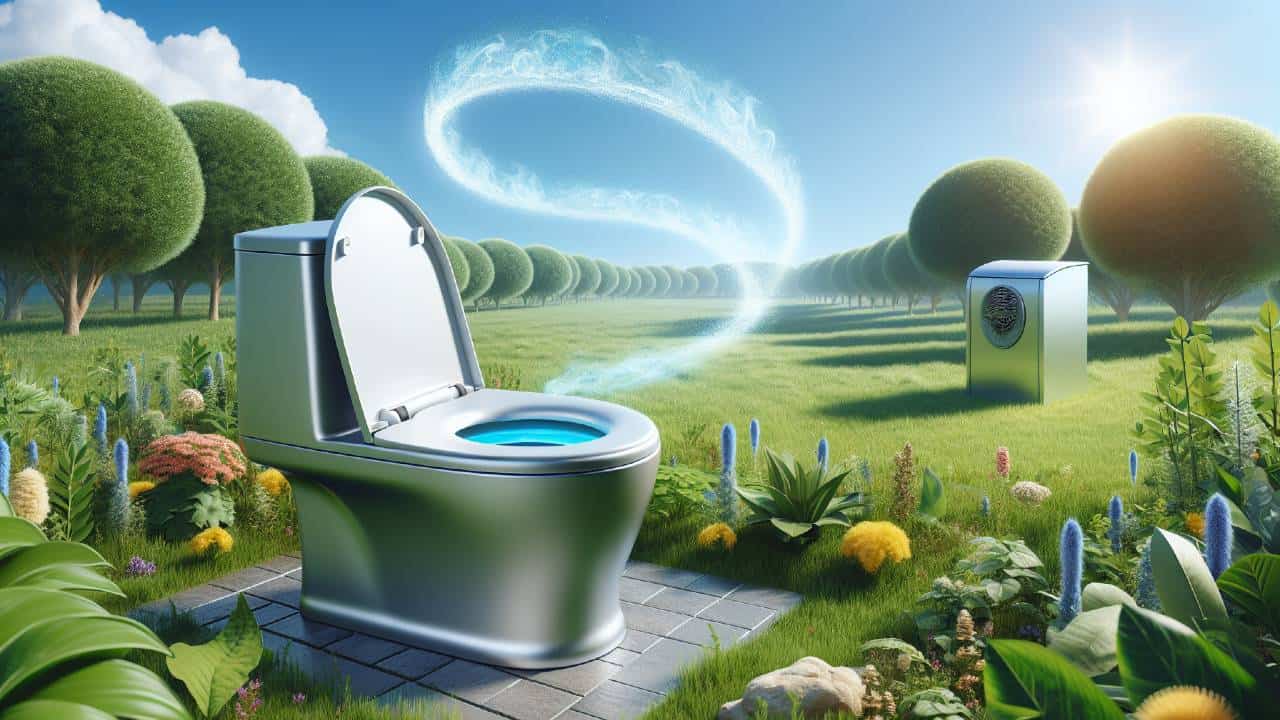
It is commonly believed that composting and incinerating toilets are unable to effectively control odors, but this is actually not the case. Incinerating toilets have a mechanism for controlling odor by burning waste quickly, which disperses any resulting smell. An electric fan and ventilation system work together to eliminate odors during operation. Regular maintenance of these types of incinerating toilets require includes cleaning various parts such as outlet pipes and venturi pipes, removing debris from the ash container, and using a vacuum cleaner to clear exhaust pipes.
On the other hand, composting toilets use organic materials like sawdust or coffee grounds to absorb and neutralize odors. The proper separation of liquids and solids also plays an important role in keeping odors at bay in these types of systems. One misconception about incinerating toilets is that they emit strong smells for extended periods. This smell only occurs briefly while actual trash incineration takes place before dissipating quickly into something much milder than traditional toilet scents.
When it comes down to maintaining cleanliness through effective odor control mechanisms, there are certain differences between how each type operates with its own specific requirements associated with optimal performance needs – understanding all aspects will assist greatly when making choices regarding household sanitation facilities.
Capacity and emptying frequency
A composting toilet typically has a solid tank with the capacity to hold around 6.5 gallons and a liquid tank that can hold approximately 2.2 gallons of waste. An incinerating toilet is capable of accommodating about 3-4 visits per hour.
In terms of maintenance, a household using a composting toilet would need to empty it once every month on average. This may vary depending on factors like usage frequency and how quickly the bin fills up with waste materials.
On the other hand, users should regularly empty an incinerating toilet at specific intervals – usually after one week or for every hundred flushes in case of ash disposal containers and after several uses when disposing of wastes or cleaning out tanks. The convenience level as well as ease-of-maintenance are essential considerations for potential buyers looking into either type (composting vs.incinerator) of toilets mentioned above.

Environmental impact and eco-friendliness
Incinerating toilets has significant environmental implications, such as burning nutrients in waste and creating ash that is not suitable for plant growth. They also emit greenhouse gases, making them less eco-friendly compared to composting toilets.
The disposal of waste through incineration has a negative impact on the environment due to the release of pollutants like carbon dioxide and nitrogen oxides into the atmosphere. This is because these types of toilets require electricity or gas sources for operation within an enclosed chamber where waste can be burned.
On the other hand, composting toilets are a much better option for reducing our ecological footprint when it comes to managing waste. By using natural waste circulating diverting human excrement from sewage systems and minimizing water usage, they offer a solution to sanitation issues while being more environmentally friendly and conscious.
Composting toilets excel at promoting sustainability by significantly decreasing resource consumption unlike their counterpart – incinerating ones which consume more resources due to its reliance on electricity during use or while producing nutrient-poor ashes post-incineration process.
Convenience and maintenance
Maintenance is an essential aspect to consider when choosing between composting and incinerating toilets. Incinerating toilets need regular emptying of the ash, cleaning of the blower motor, replacement of parts as needed, and yearly cleaning of exhaust and ventilation pipes. This maintenance process can be more complicated than that required for composting toilets, which may impact a homeowner’s decision.
Compared to their incinerating counterparts, composting toilets generally require less maintenance. They typically only need to be cleaned every 1-4 weeks depending on usage, and the waste needs to be emptied roughly every three months. The lower maintenance requirements of composting systems make them a popular choice for many homeowners. For more tips, consider reading our blog on how to empty a composting toilet.
The convenience factor plays an important role in deciding between incineration or composting toilet options along with understanding their respective maintenance needs. Homeowners should take these two practical factors into consideration before settling on one type over another.
Ultimately, finding the right fit boils down to personal preference taking into account lifestyle habits alongside weighing up environmental benefits and what each system requires regarding cleanliness implications so it will match both living style plus desires best.
Choosing the right toilet for your home
In a residential setting, the selection of an appropriate toilet largely depends on access to household resources such as water and electricity. For incinerating toilets to function properly, a reliable source of power or gas is essential. Alternatively, composting toilets are better suited for environments with limited access to these utilities since they do not rely on them.
Both types of toilets can be customized to fit various home configurations without the need for sewer connections or water supplies. This adaptability makes them highly versatile options. Their compact size compared to traditional models also makes composting and incinerating toilets ideal for smaller homes.
The choice between incinerating and composting toilets ultimately comes down factors such as personal lifestyle preferences and household size along with considerations about cost-effectiveness and availability of resources like eco-friendliness electric supply may impact this decision-making process as well especially considering that while initially appearing more budget-friendly than standard counterparts over time costs could increase due recurring expenses related ventilation fans in case sewage systems were installed instead sawdust used fuel burning appliances for waste disposal methods future maintenance fees ought factored consideration when making final decisions regarding purchase installation one’s preferred type toilet model chosen fitting best individual needs circumstances desired outcomes.
Don’t forget to check out our comprehensive review on the best composting toilets available in the market.
Summary
Both composting toilets and incinerating toilets offer distinct benefits and considerations. These include efficiency, water conservation, cost-efficiency and environmental impact. The decision to use either type of toilet depends on personal preferences such as lifestyle choices, level of concern for the environment and budget constraints. By having a thorough understanding of the features and requirements involved with each option, individuals can make an informed choice that best fits their household needs.
If you’re undecided between an incinerating toilet or a composting toilet, it might be helpful to explore the myriad of other toilet options that are also appropriate for a tiny house.
Frequently Asked Questions
Is composting or incinerating toilet better?
Composting toilets are better than incinerating toilets because they produce compost to keep natural waste circulating through the environment and can process organic kitchen waste, reducing everyday garbage.
What are the cons of incinerator toilets?
The cons of incinerator toilets include higher purchase costs, no landscaping benefits, and offset lower water bills with higher power or fuel costs due to the average electric model using around 1.5 kWh consistent power per incinerating cycle.
How often do you empty an incinerator toilet?
As directed by the user manual, it is recommended to empty the ash container and flush out the filter on a weekly basis or after every 100 flushes. For proper functioning of black tank of the incinerator toilet, it is important to perform these maintenance tasks every 500 flushes.
Regular upkeep of an incinerator toilet is vital in ensuring its optimal performance. This includes regular flushing and disposal of ashes from the designated container according to schedule outlined in your instruction manual.
How do incinerator toilets deal with urine?
Incinerator toilets handle the disposal of waste by eliminating all liquid waste and moisture through evaporation, while burning solid waste and toilet paper into ash. This process can only incinerate urine, solid waste, and toilet paper.
How does an incinerating toilet work?
An incinerating toilet works by burning biological waste at high temperatures, which reduces it to minimal quantities of ash. It needs electricity electric heat or natural gas to function.
